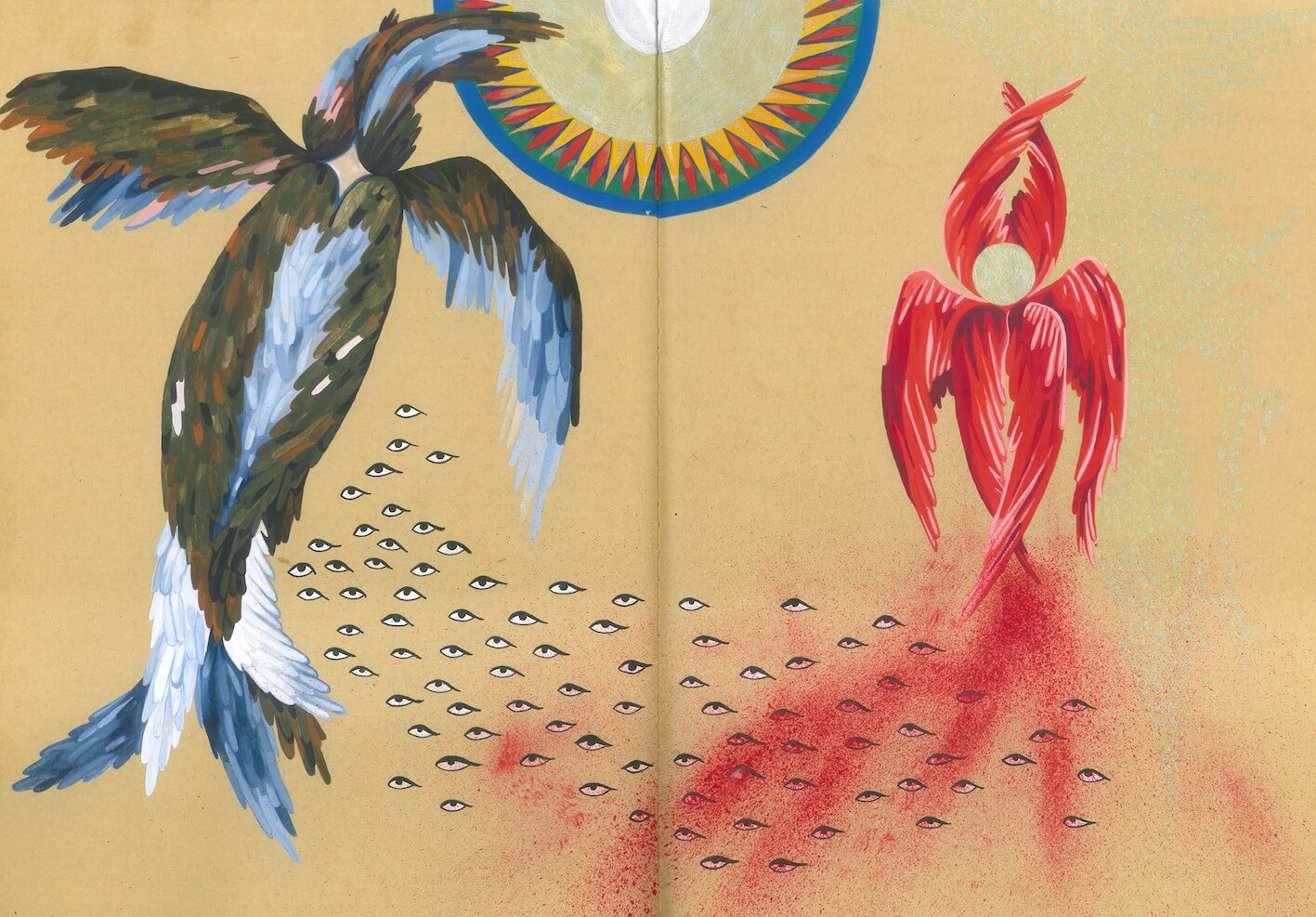Ivana is a visual artist who likes to illuminate her own drawing, to make genre-scenes inspired by contemporary society through the language of medieval miniature. She braids her diaries and drawing pads with cloth which she likes or she weaves them. Sometimes, she works as an educator and holds a workshop titled The Extended Field of Drawing at DC Krov in Belgrade.

You often draw wild animals in notebooks and books that you make by yourself. There is destruction, fire, birth and death in those scenes. Sometimes, it seems to me, even some tenderness. When did animal motifs become a part of your drawings?
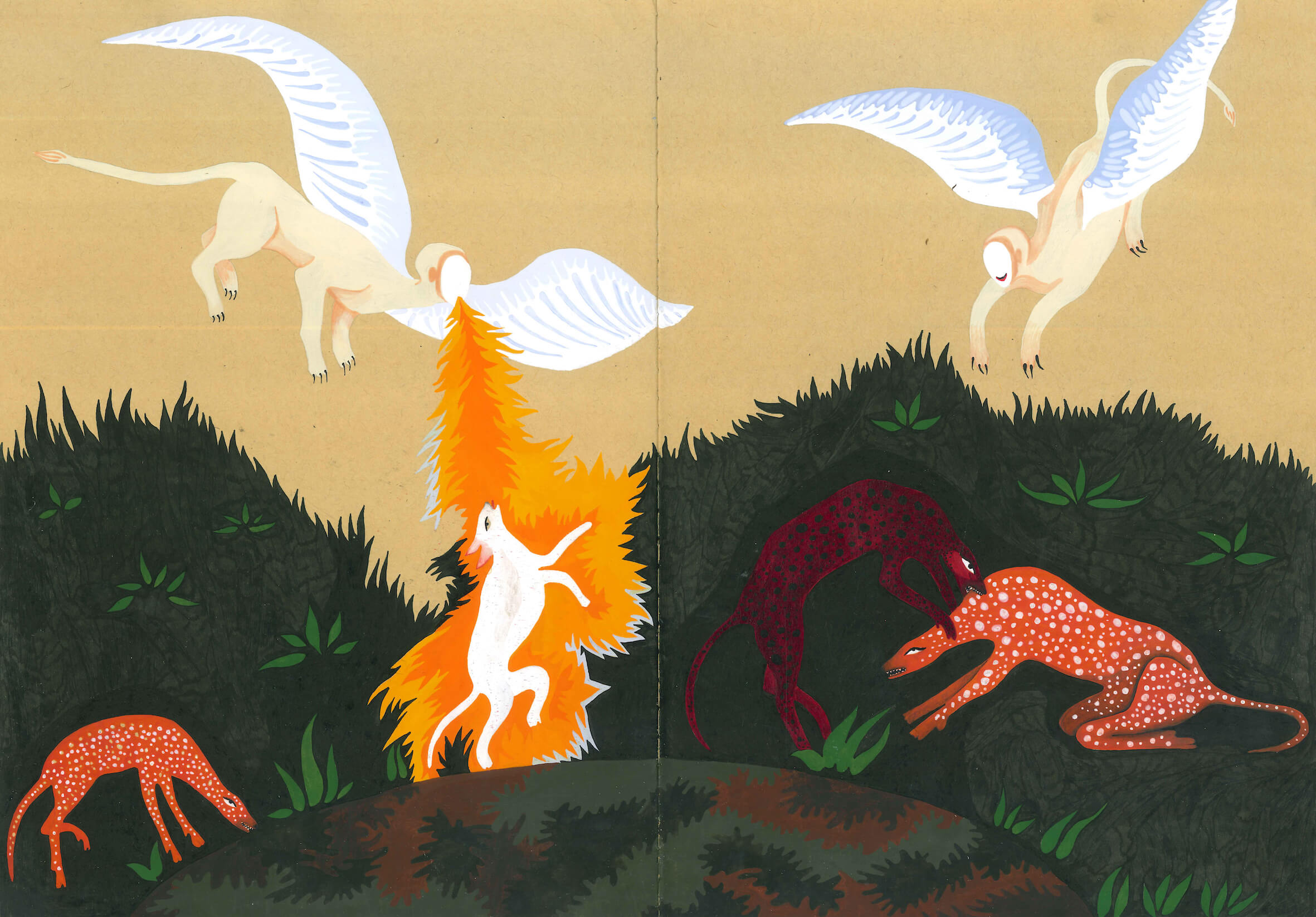
Wild animals started to appear very early in my drawings. It was natural during childhood, and later on they reappeared while I was at the Academy and I started working on the first art notebooks.
In a way, it was a kind of a rebellion. I protested against the classes where we drew the study of the human body. I was bored because I had mastered it. Maybe now it sounds conceited but I think it’s important to work on what you want to deal with as an artist.
I give roles to animals, they’re like some art fables. Sometimes I put them in positions of my emotions, and destruction is something that is certainly present in humans. The tenderness you see is actually empathy, at least in my drawings.
When drawing animals or shapes you sometimes use double lines, which enhances the dynamics of the whole scene?
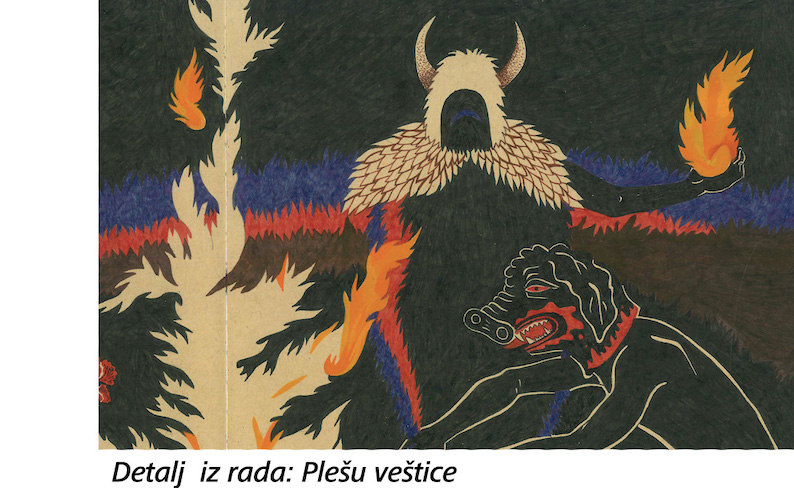
Lines are the product of the train of thoughts, the material I use, and sometimes they are the reflection of the music I listen to. During high school, I took painting classes with a great professor, Radivoje Dragin, who insisted on recognizing what should remain during the creation of a drawing or painting – sometimes even a mistake or a random gesture brings freshness in a drawing. It can also produce dynamics even on a static composition.
You do not present the perspective realistically. What attracted you to such a creative decision?
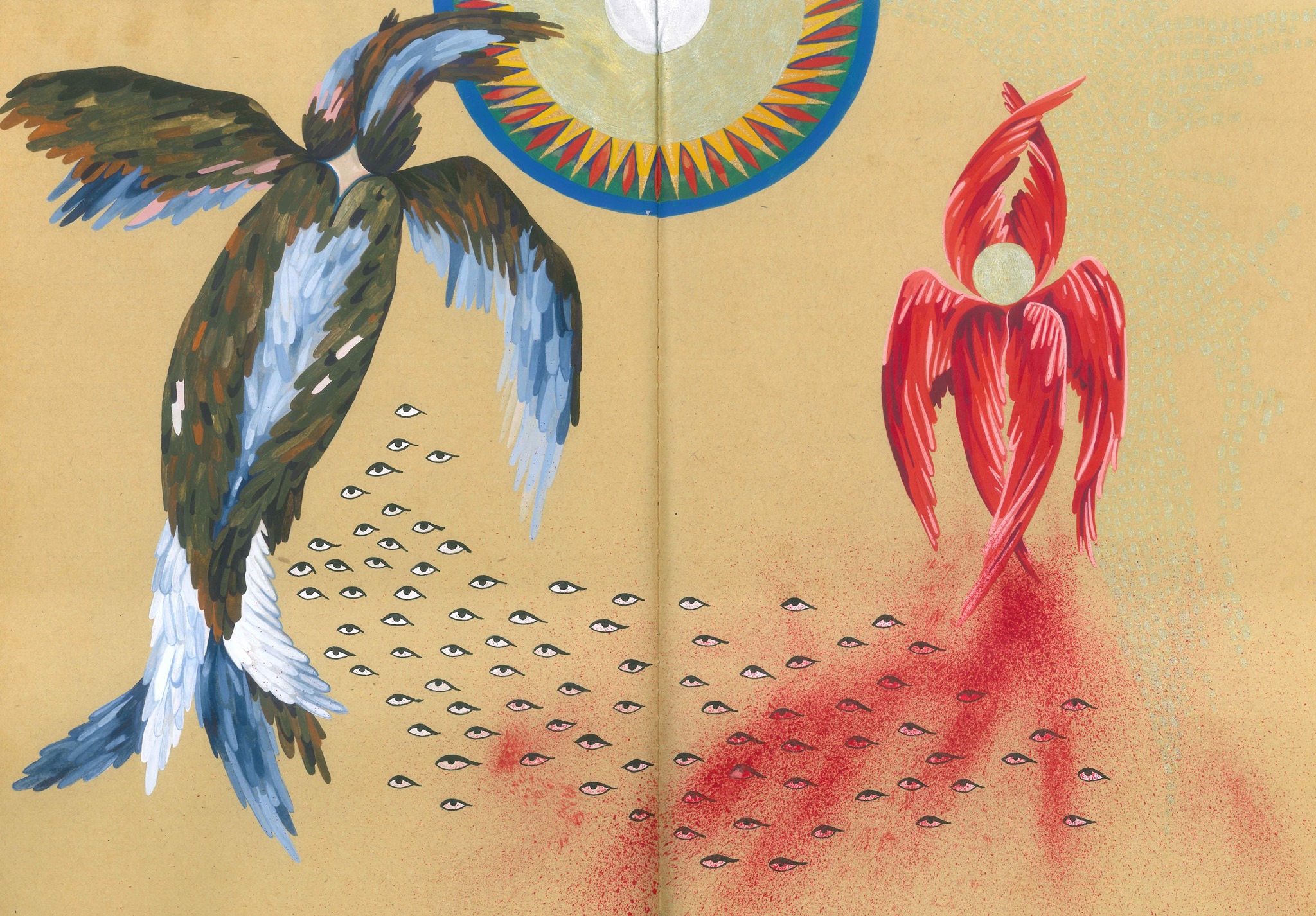
I was inspired by Persian miniatures, but not just those. In art history we find perspective in the first stages of the Renaissance. Before the miniatures, I liked the medieval Western tapestry, frescoes, and mosaics (Greek, Roman, Israeli). The loss of perspective brought the feeling of being absolutely free and unburdened. I am able to create a time flow of narration that is not linear. And also – the realism of the perspective in my case would disturb the symbols.
Tell me more about the work Wild Life..
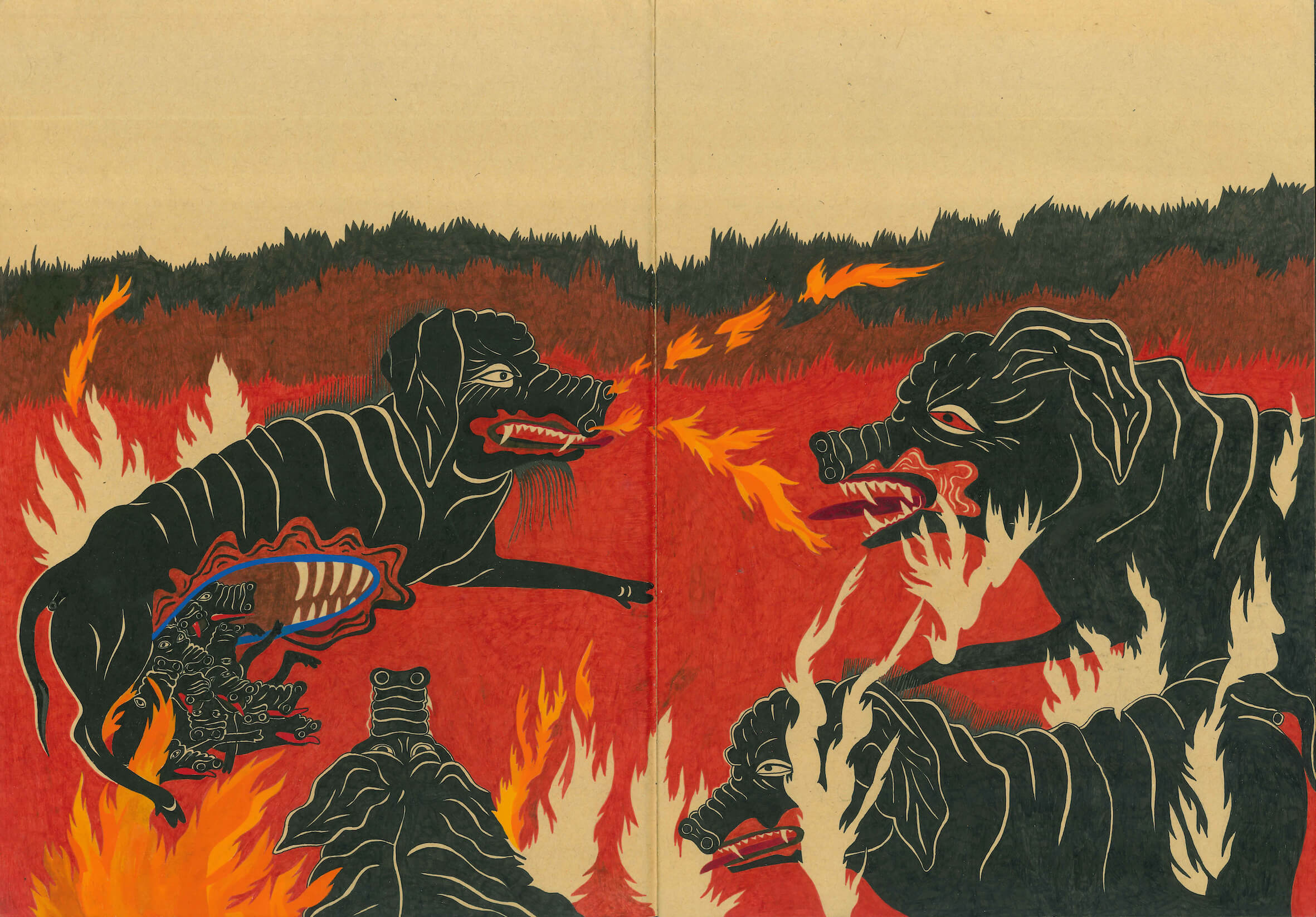

The drawing Wild life is full of layers. I would like the observers to have their own interpretation, because no matter how much information they had about the drawing, they could never see it from my perspective.
The first layer of the drawing is the one we encounter – a conflict, fire, suffering. Is there any hope? The second layer is the stomach of the wild boar, its young ones and the mother who protects them against other boars. My intention was to show sorrow and suffering, without producing a debate about what is moral, natural, necessary, etc. That is why the man is excluded. I’m interested in emotion and physicality.
The third part is to imagine people instead of animals as the main protagonists in this narration. A scene from a war, an intrusion into a house. It’s not who they are or what they are, but what has been done. I would stop here talking about the layers, there are more. There is also some fire in the background.
In the latest drawings, animals are no longer a dominant motif, but humans. In the book you titled Neuropathology of Belgrade, you dealt with the protests that took place this summer in Belgrade?
I followed the news every day and transferred to notebooks what I saw. The trigger for the first drawing was the situation in which a police officer in civilian clothes strangled a protester, following the case in America. I titled that drawing Hands and Feet of the System. As a base for my drawings I used the book An Atlas of Neuropathology published in Minsk during the second half of the XX century. That form of a notebook/book was something that was natural for my style, and I thought that creating my drawings in that way could really manifest its full potential.
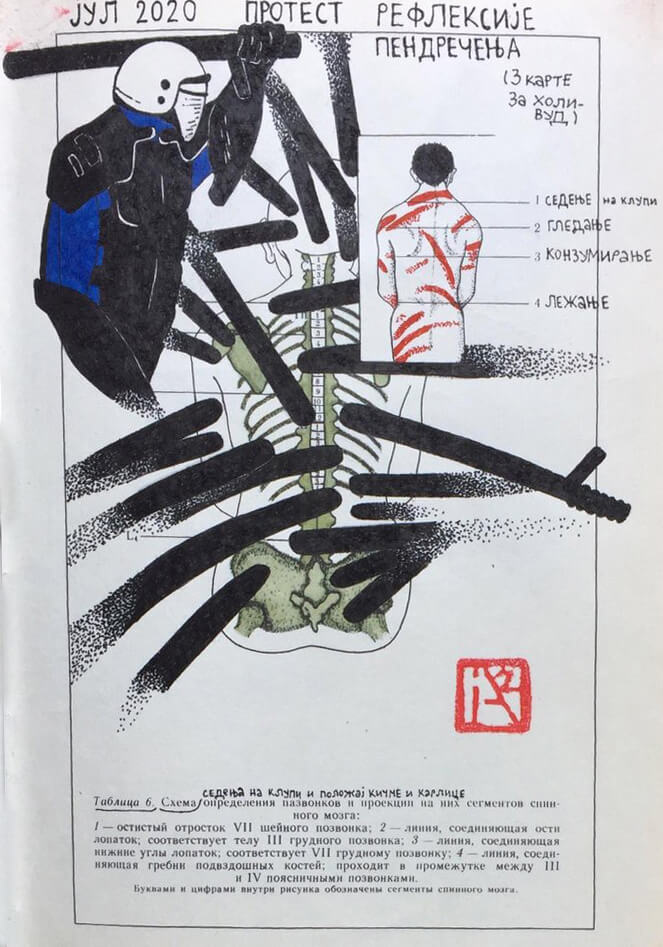
The selected events I dealt with in the drawings represented the absurdity of a shorter period of time, although it was actually about the consequences of decades of political incompetence. There was so much nonsense and dangerous moves during the protests – that was priceless. Police brutality, sports fans, anti-fascist groups armed with augmented theory, corona, syndrome of the mass, and absence of criticism. I want to thank everyone who inspired me to create the drawings such as Hands and Feet of the System, Police Zombie Apocalypse, Urinary Weakness of Kosovo Office, and many more divine stories without which my creation and the whole society would be devoid and deprived of beauty. In the end, that notebook is a product of a cynic, spiced with painful satire.
